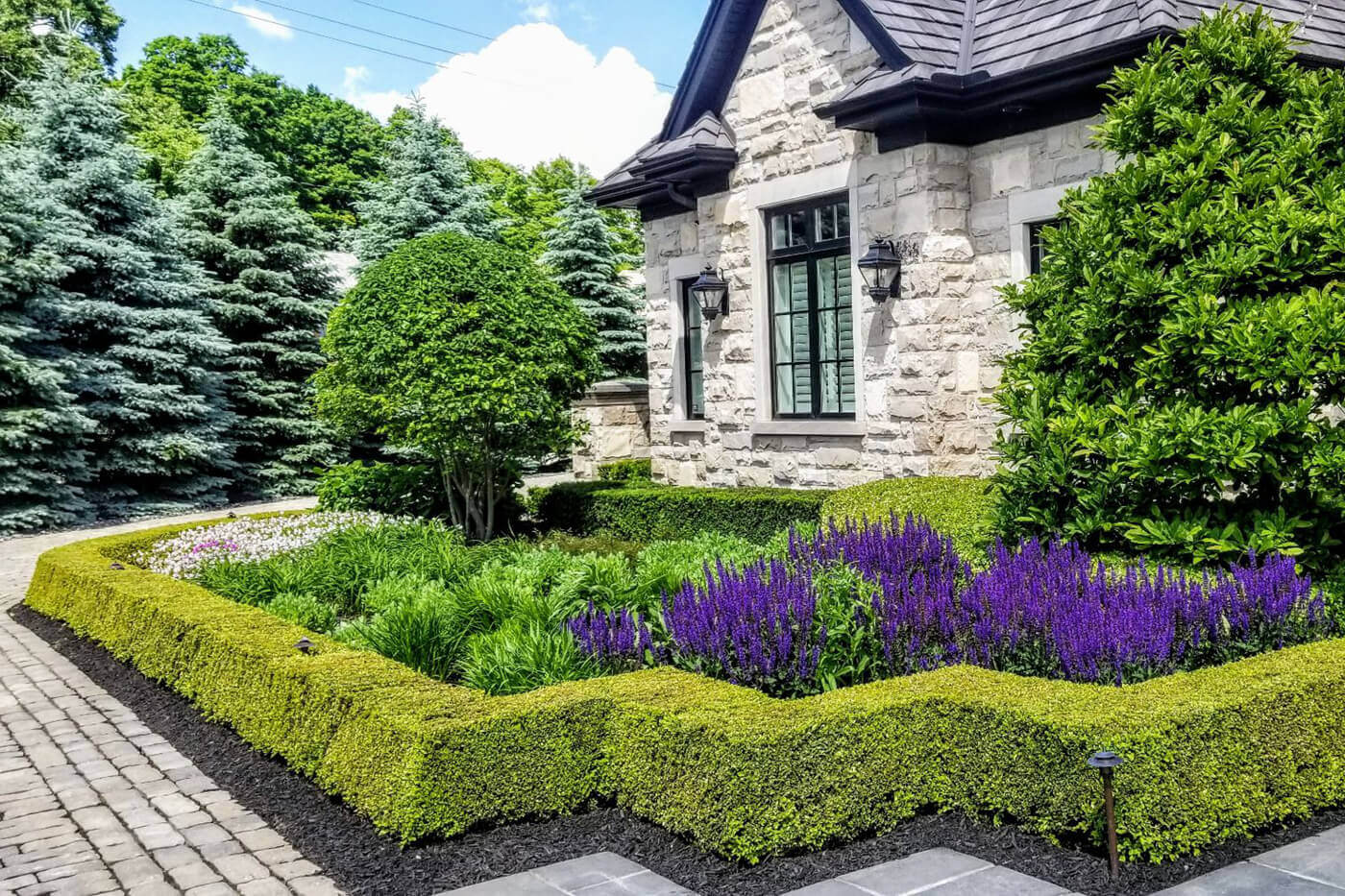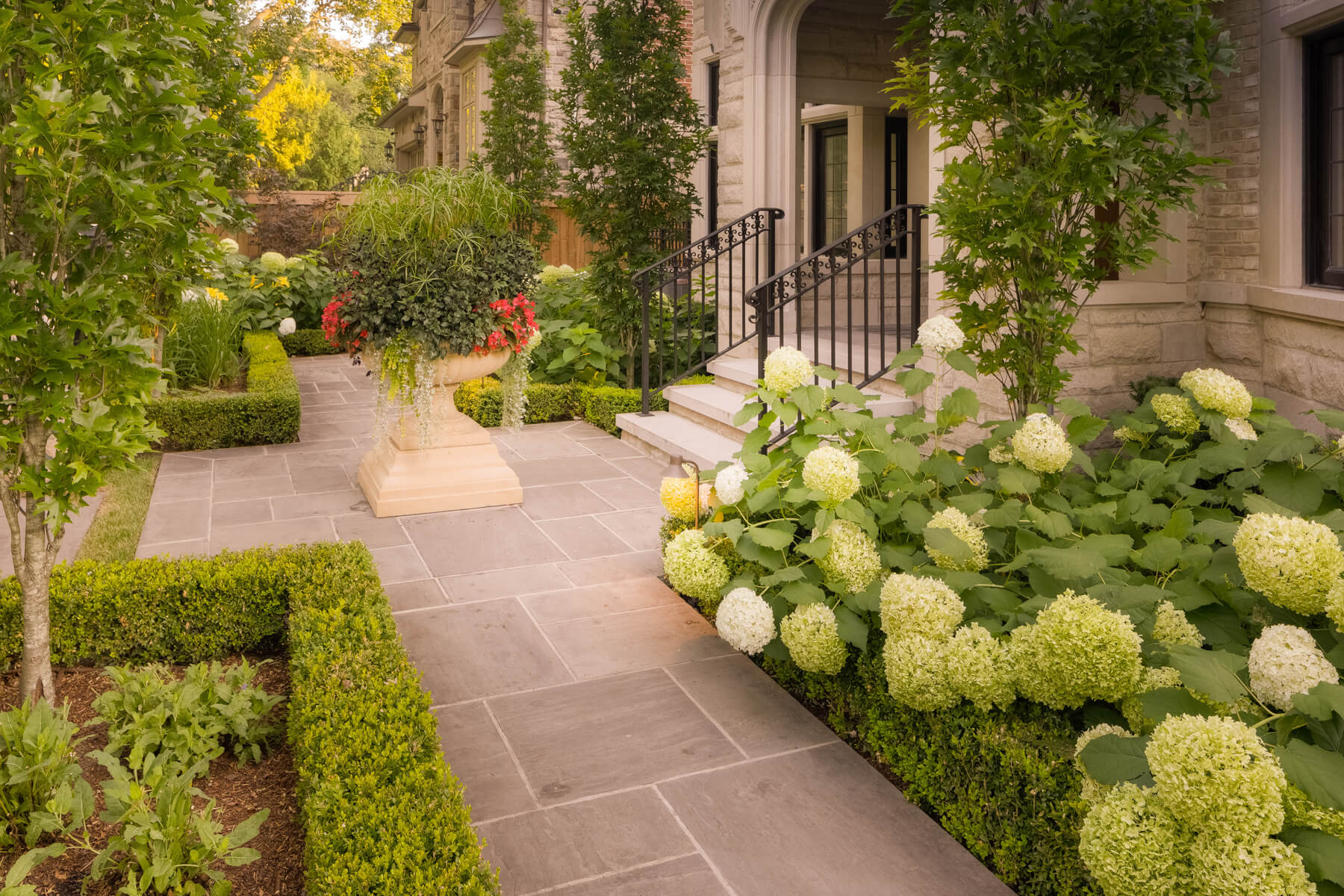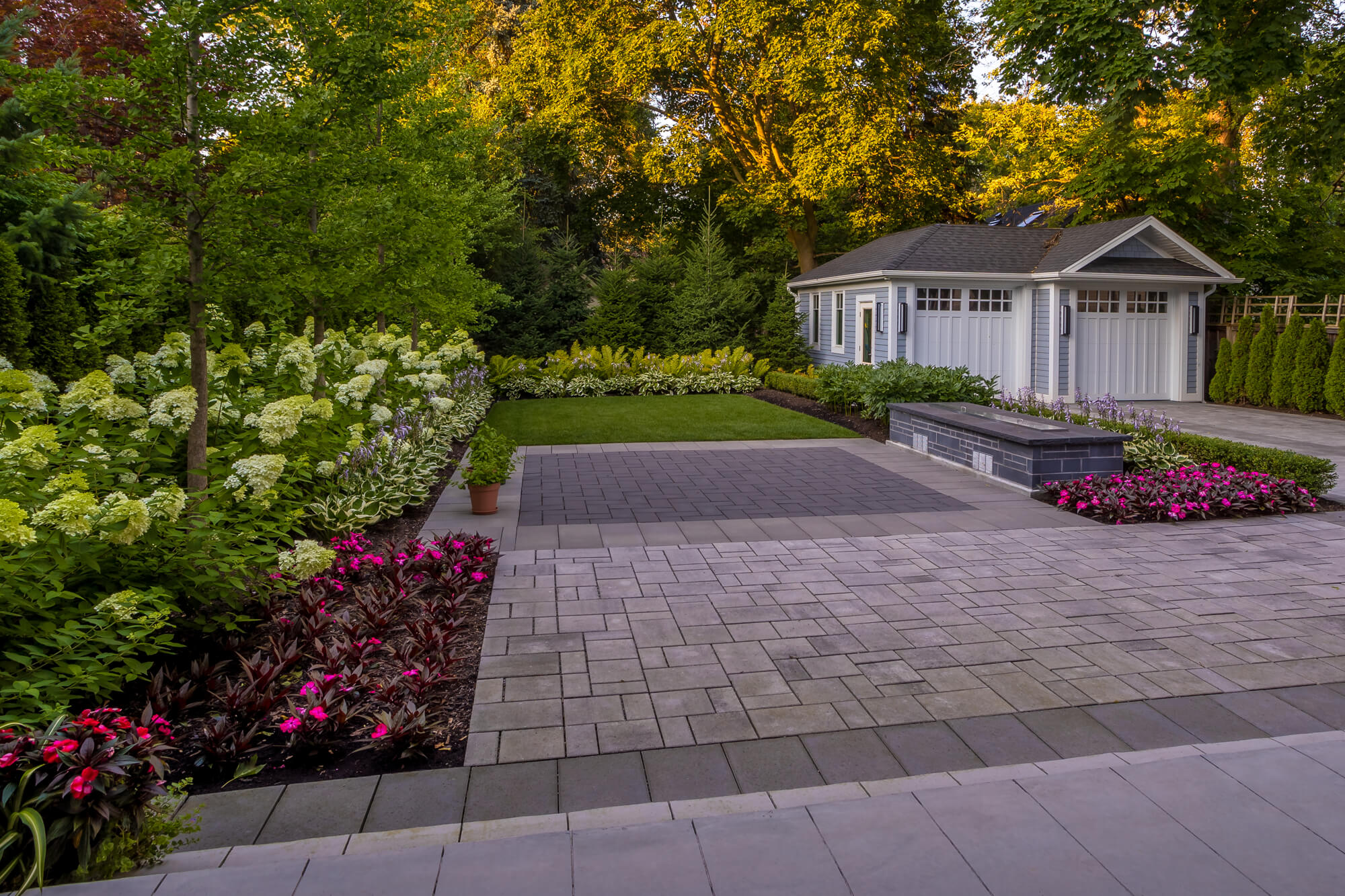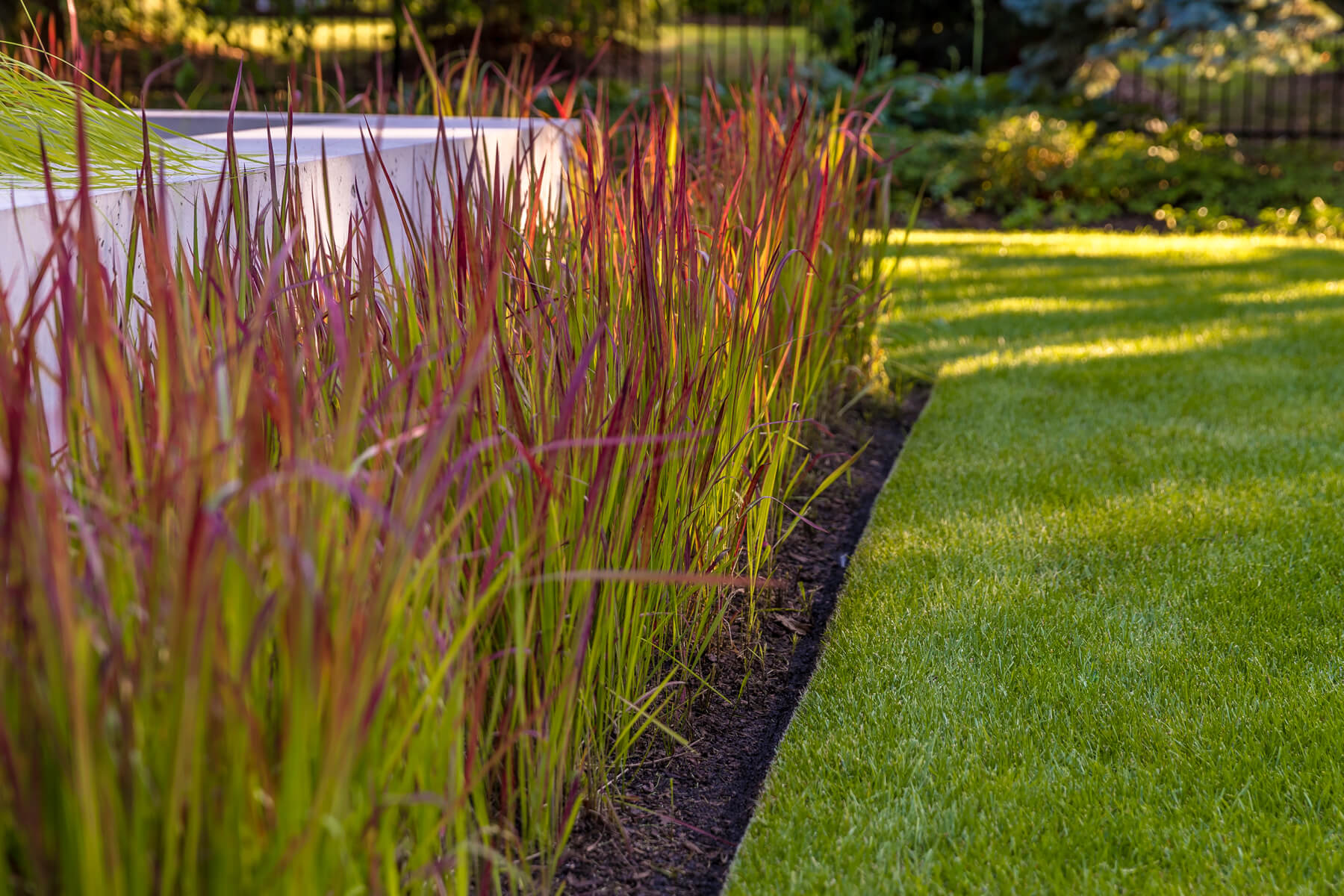August 3, 2021

The quality of the acutal photos being entered are very important.
Landscape Ontario Awards of Excellence: What to consider before entering
Four judges offer tips and advice to association members
Formed in 1973, Landscape Ontario has consistently aimed to uplift and recognize landscaping and horticulture excellency.
With the innate responsibility to commend outstanding work, LO has granted awards to the best and brightest landscape and horticulture projects and to outstanding professionals across Ontario.
Created in 1973, the Trillium Award was the first official accolade presented by LO. The award celebrated noteworthy contributions to the betterment of horticulture in general.
Since then, the annual awards have evolved and developed to encompass a wide range of distinctions — from lighting to design to irrigation and even plant material and retail displays.
Jennifer Hayman, owner of Jennifer Hayman Design Group, has been a recipient of several awards since 2009.
“What inspired me [to enter], and what I think is really important, is to share information,” Hayman says. “I think as an industry, there’s value in showing others what you’re working on and looking back on what you have accomplished.”
The awards give members an opportunity to market themselves against top-tier competitors but also share, network and learn from industry peers.
While the entry process can be daunting, Hayman urges people to believe in themselves and their vision. She especially encourages young designers to take the leap and enter, to push boundaries and not be afraid of showcasing things that perhaps aren’t quintessentially popular.
July 1 marked the opening of the online entry period for the 2022 LO Awards of Excellence, and as you mull over if you want to enter, here’s some advice from the very people who will judge those entries.
 Projects can be entered up to three years after completion when the plant material is more mature and established.
Projects can be entered up to three years after completion when the plant material is more mature and established.
What is your philosophy when it comes to judging?
Jeff McMann, Consultant — Judges Construction, Maintenance, and Interior Plantscaping
When it comes to judging, we're looking for quality work. We’re looking for things that are level, things that are straight, you know, the obvious and important stuff. We want to see clean construction and all the little intricacies. Like how do they cut the pavers? How did they finish certain products off? You have to really look at the project, figure out what the contractor is up to in terms of work and what does the client want as well. You meld all that together and then look at the project as an overall.
Alistair Johnston, Partner at Strybos Barron King Ltd — Judges Construction
Although we are “judging,” I think one of the most important parts is to just take it in without judgment — that's the challenge. There’s certain criteria we follow in terms of quality, construction ability and the finished product that we look at, but there's a design element that's also important. It’s important to remove preconceived notions of what a finished product should look like and instead appreciate the design and the completed product for what it is.
Ron Koudys, Professor and Landscape Architect — Judges Design
What is my philosophy? Oh, that's a great question... when I start, I usually say the purpose of the judging process is not to pick a winner, but to acknowledge a high level of quality and creative ability in the design. You could have checked all the boxes on our criteria list, but sometimes there's this spark that leaps out off the page and makes you say “wow.”
As judges, we try to find those designs that are exemplary, but even if there isn't a spark there, they still may win, just as an acknowledgement of high quality work. I, however, always get excited about those few that really stand out.
Rob Redden, VP at In-lite Outdoor Lighting — Judges Lighting
Lighting is artwork. So, just because one person wins an award one way doesn't mean that, that is the only way. Different professionals will express themselves in different ways and I think lighting gives us that opportunity. The lighting is our paintbrush.
I really like to see how creative people can be within the budget constraints of the different categories, and how they can utilize different lighting effects to create layers within their landscape. Generally, I like to see how they're pushing the industry forward using creative and newer techniques, as opposed to sticking to the same old.
 The best time to take photographs is when plant material is in full bloom.
The best time to take photographs is when plant material is in full bloom.
What are the first things you look for in a submission?
McMann:It depends on what it's for. If it's for maintenance, we always look at the obvious things — like colour, is the grass green? How do the annuals look? The first visual appeal is important for maintenance.
For construction, the first impression matters most — what’s on the first slide and what does it represent? The first slide sets the tone for the project. That's not to say we don’t change our minds — with a good progression of photos we often do. You have to take everything together, put it all into one thought process and evaluate upon that.
Johnston:
I think it's just the broad concept, the overall appeal. I mean, I've done this for a number of years and some just pop off of the screen or pop off the page. When you first see a project, there are some where you can tell that it's an award winner right away with the quality of its finish layout, the materials that are being used and the complexity of the project. So there's a number of things that come into play.
Koudys:
The first thing I do is make sure that they qualify. You know, if their name is on the drawing, we don't look at it — we need to judge blind. Then we organize them by category, lay them out on a table and walk around to get an overall overview.
We use criteria to judge, but it’s conversational too. One of us, usually me, is frantically writing down notes as we share opinions and see what different people noticed. We think a lot about “why did they choose to do this?” We look carefully at the photos or the explanations to really get an overall fair sense of what the designers intent was, how well they solve problems and are the solutions they developed unique and creative.
Redden:
So, our judging process just changed recently. We've moved from more of a figure skating style — the idea of “oh, we like this or we don’t like this” — to a harder-set criterion list. We met as a group and revamped the award levels at all different categories to make it a bit more specific to allow participants in the awards to understand exactly what we were looking for and ideally, give them an opportunity to be more successful.
Overall, I’m still looking for creativity — with lighting effects, shadows, down lighting and silhouette lighting. That stuff can take you to a whole other level. I think lighting, as a part of outdoor living, is in a monumental shift — as are a lot of the parts of the landscape industry. I think those professionals that can take that and push those limits are creating exceptional value for their clients. In turn, they’re also pushing our industry light years — pun intended — forward with regards to design and lighting creativity, which will enable the homeowner to still use that space for a plethora of more hours.
 Clean lines for hardscape components are vital.
Clean lines for hardscape components are vital.
What are some misconceptions entrants may have?
McMann:It’s not just the design itself, but it’s “did you really meet your client's expectations and did you capture what your client was after?” If the client wanted something that was, let's say, a formal garden and then you came up with a different style that’s important to us. The purpose of our industry is to really showcase the talent and ability we have to make the best experience for our consumers.
Johnston:
It’s not just about nice looking photos, but the quality of the actual photograph that’s important. We need to zoom in and if it’s a poor quality photo then we can’t actually see the details that might be important. Overall views are good, but also giving us photographs of detailed elements is needed. However, if you’re going to do that, also make sure you aren’t exposing any deficiencies in your construction.
Koudys:
People think that I look at a drawing and right away, I understand everything that's going on. I'm really reliant on the text that's provided and the clarity of the drawings — the completeness. The submission is really a communication exercise and the better they communicate, the more value I can derive from the design.
Focus on the “why you did it?” not just, you know, here's a swimming pool. I want to know why you put the pool where you put it, what were the considerations that underlay the design intent and stuff like that. If you can communicate it to me, it gives me a better appreciation of the integrity that is behind the design — that there's a lot of thought and care given to the placement of elements. Without the explanation, I have to come up with my own conclusions and they may not even be close to being right.
Redden:
There’s two of them. First, people think you need a lot of light to be in the landscape lighting category, but simple and elegant lighting is often as effective or more effective than too much light. Second, I do think that often decent projects are overlooked due to poor photography and don't allow us as judges to properly see what the light is doing in the landscape.
 Include close-up images that show off little details, like edging, masonry work and intricate details.
Include close-up images that show off little details, like edging, masonry work and intricate details.
What are some things people should include in their submissions?
McMann:Quite often, I think the attention to detail is the key part of submissions people don’t realize are all that important. So if you're doing edging, show close up of the edge. If you're doing masonry work and your work is outstanding, do a close up. A lot of times, we just get overview pictures and we have to zoom in to see particular features of the quality of work that is there.
Johnston:
The fit and finish of the work. We zoom in on the photographs and look at everything very closely. Sometimes people miss a few key details that are important to achieve a level of excellence we’re looking for. That’s really what it comes down to — it's the fine details.
Koudys:
If the design is really poorly resolved, that typically doesn’t bode well and this comes somewhat with experience. You need to look out for how you create the interaction between spaces, how the lines meet other lines, how you relate the garden to the house or relate the garden to its context. If I'm looking at this design, and you’re presenting this as if this is a flat plane and then I see steps I’ll say, “what's happening in terms of the elevation off the ground? How are you resolving that?” Some people will put north facing down when the convention is up. Perhaps there’s no scale on the drawing. Following these standard conventions aren’t fatal, but they’re important to the integrity of your design.
I often tell my students that as a designer, we’re selling an idea. So, if you're careless with your drawing and you're careless with your design development, that can reflect poorly on your submission.
Redden:
A big one is focusing on good photography. We often find people in the lighting category waiting until it's dark to capture their submissions — nighttime photography is difficult — when in fact, you need to do it in that blue hour. That’s right after sunset, but just before it's dark, when the camera can still balance out some of the ambient light with the effects of the landscape lighting.
Hopefully, participants understand that photography is a part of it and that they can work to get better images, which in turn will help them for self promotion but also helps Landscape Ontario promote their business as well.
 Regardless of the category you are entering, send in a crew to clean up the site before taking any images.
Regardless of the category you are entering, send in a crew to clean up the site before taking any images.
What advice do you have for participants?
McMann:Often, participants feel like this is a photo competition — it’s not. Focus on the details and the quality of work that your firm is doing. Remember, it’s not the best picture that wins — we can all take photos. It’s the care and craftsmanship that matters most.
Johnston:
Don’t necessarily apply for an award the first year that the landscape is completed. When it comes to plant material, at the beginning it hasn't had a chance to establish or mature for even one growing season. Letting it flourish can make a huge difference so I would say sometimes it's better to maybe wait a season and submit the following year, unless, you know, you have a mature planting scheme to start with.
Koudys:
Just as general advice, as time progressed, drawings have gotten better and better, and pretty much everybody now is using some form of computer-aided design, 3D modelling — that kind of thing. That's all really helpful. All of that has elevated the quality of the submissions that we've seen in terms of professionalism but a lot of it is smoke and mirrors. If it's a bad design, no matter how much lipstick you put on it, it's still a pig. Put more of your focus on careful craftsmanship and communication. I wouldn’t downgrade someone because they sketched a design if they can really tell me what makes it excellent — that’s the base of it.
Redden:
It’s important to plan your shoots. Get to your location a day or two beforehand to reignite the focus or clean up your gardens so that the light is creating the effect it was intended to.
We often do lighting projects in the spring and so when we go back in the summer gardens have just exploded. If we’re going to shoot those landscapes then we also need to get an arborist in, a yard crew — to clean it up and prepare the site for award-winning photography. We want to highlight why the lighting is important where it is.
Online entry is now open until October 1
The 2022 Landscape Ontario Awards of Excellence program is open to all active members of the association. Full details, including the various programs, categories, criteria, judges score sheets, past winners, ceremony highlights and online entry are available at LOawards.com. Entries for this year’s program close Oct. 1, 2021.ENTER NOW